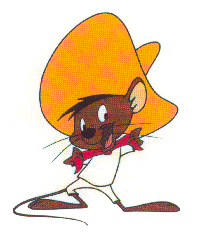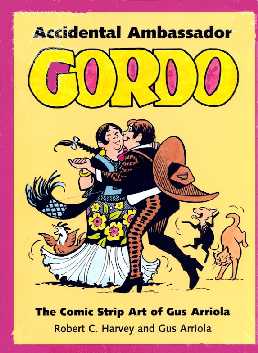
-Gordo
The newspaper comic strip called Gordo first started in 1941 and later became a part of
the United Feature Syndicate. In the beginning, Gordo (an English translation being‘Fatso’) was rooted in stereotypes. Gordo was a Mexican bean farmer who spoke broken
English. Other characters included his nephew Pepito, “who thought Onkel Gordo was ‘the mos’ bes’ bean farmer of the whole world’, Paris Juarez Keats Garcia (aka The Poet,
Gordo’s best friend), Artemisa Rosalinda Gonzalez (a middle-aged widow whose major goal in life was to marry Gordo, to Gordo’s horror), Señor Dog (a chihuahua who shared Gordo’s home), and several miscellaneous animals, (who also shared Gordo’s home)”
13. The creator, Gus Arriola, has explained that the
reason he founded Gordo on stereotypes was because that was the way things were done at that time but Arriola realized late on that his comic strip did not need to be like that.
It was also a way of introducing viewers to another culture. Within time, “As his
characters developed, they became richer and more fully rounded, and Arriola felt less
need to saddle them with dialect and stylized behavior. Eventually, Gordo even started
wearing American-style clothes” 13 Gordo was one of the few outlets that gave Americans who were not exposed to any Spanish or Mexican culture a way to understand the customs of these ordinary people of another culture. Certain words that were introduced, such as burrito, tamale, and tortilla, became popular in an English-speaking America with the help of Gordo. The characters were always silly, respectable, and fallible - basically, human beings. They always retained their identity as Latinos, though there were more characters from the US that came and somewhat “diluted” the culture, i.e.: Americans marrying into the family. By the time Gordo was coming to an end, “ California’s state legislature voted a resolution commending Arriola’s professional excellence and thanking him for his many years of promoting inter-ethnic understanding through entertainment” 13
Gordo was undoubtably founded on stereotypes of Mexican culture but later transitioned
into a very popular comic strip that appeared in hundreds of newspapers nationwide. But
does the end justify the beginning with this comic strip? And once again, who is being
pleased: Latinos or non-Latinos? Can this piece of drawn media both cultivate
understanding of another culture as well as perpetuate stereotypes? Clearly, its more
than 40 year run proved that it just might have done both.
